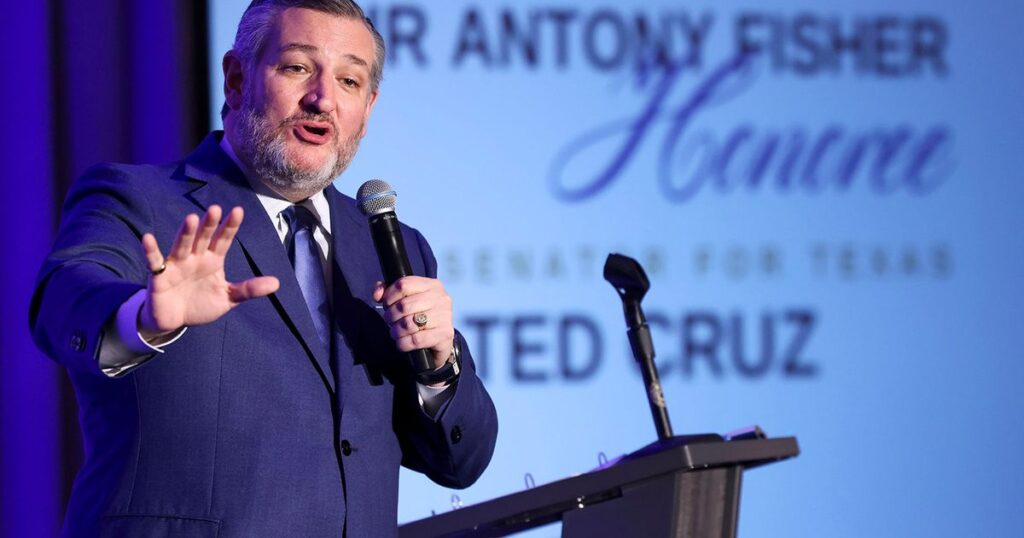Of their efforts to offset tax cuts and exert extra management over the Federal Reserve, some U.S. legislators have recently centered consideration on an in any other case obscure component of financial coverage: The Fed, they argue, ought to cease paying curiosity on the money reserves that banks maintain on the central financial institution.
It’s a nasty concept, in additional methods than one.
The authority to pay curiosity on reserves, an influence granted to the Fed by Congress in 2008, has enhanced the Fed’s skill to assist the financial system. It places a flooring on short-term rates of interest, as a result of banks have little incentive to cost lower than what they will earn risk-free on the central financial institution. It encourages banks to maintain loads of reserves, serving to be sure that they’ve sufficient money to fulfill surprising calls for and to fulfill the liquidity necessities that have been significantly strengthened following the Nice Monetary Disaster. It permits the central financial institution to offer emergency liquidity to the monetary system with out undermining its financial coverage.
But all of a sudden, legislators need to eradicate the follow. Some, notably Sen. Ted Cruz, posit that doing so would save the U.S. authorities greater than $1 trillion over the following decade. Others suppose it’s essential to shrink the Fed’s $6.7 trillion steadiness sheet, which they are saying unduly exposes taxpayers to losses and provides the central financial institution too massive of a footprint in monetary markets. These concepts are misguided.
Let’s begin with the supposed financial savings. For the Fed, reserves are created when it will increase its holdings of interest-earning property similar to Treasury securities. If it stopped paying curiosity, banks would cut back their reserves to the naked minimal wanted to execute funds into and out of their accounts on the Fed.
This, in flip, would require the Fed to unload property to revive the steadiness between the demand and provide of reserves. In any other case, short-term rates of interest would plummet to zero. The discount within the Fed’s steadiness sheet, in flip, would cut back its curiosity revenue. With either side of its steadiness sheet shrinking by the identical quantity, its income and its remittances to the U.S. Treasury wouldn’t materially change.
True, the dimensions and composition of the Fed’s steadiness sheet entails some dangers: Its pandemic-era asset purchases, for instance, have resulted in additional than $200 billion in losses to taxpayers. However this isn’t the fault of curiosity on reserves. It occurred as a result of the central financial institution invested the reserves in longer-dated property, then needed to push up short-term charges sharply to fight inflation. Consequently, the curiosity funds on reserves overwhelmed the revenue earned on the property, precipitating losses. One can argue that the Fed’s asset buy program and interest-rate coverage have been flawed, however these are separate points.
Ought to the Fed have a smaller footprint? I don’t see why. This might successfully entail a return to the pre-2008 regime, through which banks needed to intently handle their reserves, borrowing from each other every time they discovered themselves in need of money. Central financial institution reserves are the final word high-quality liquid asset. Why shouldn’t the Fed present as a lot as wanted to allow banks to fulfill their obligations?
Past that, paying curiosity on reserves — and therefore sustaining a bigger steadiness sheet — makes the Fed’s job simpler in quite a few methods. So long as reserves are ample — that’s, above the extent that banks want for liquidity and funds — the central financial institution want solely change the rate of interest on these reserves to have an effect on short-term charges extra broadly. It needn’t tinker with the amount of reserves within the banking system.
Against this, beneath the earlier scarce-reserves regime, the Fed had to make sure that provide met demand exactly. This was troublesome as a result of occasions past its management — similar to fluctuations within the Treasury’s money steadiness on the Fed or the demand for foreign money — affected the quantity of reserves. To maintain the federal funds price inside its goal vary, the Fed needed to impose a sophisticated set of reserve necessities for banks and conduct frequent open-market operations.
The present regime additionally bolsters the Fed’s skill to behave because the lender of final resort and to intervene successfully throughout monetary crises. Beneath the pre-2008 regime, it needed to restrict the dimensions of its particular liquidity amenities so as to be sure that utilization wouldn’t undermine its management of rates of interest. Now, it could actually present an open-ended backstop, which is much extra credible and therefore efficient in restoring market operate and monetary stability.
In sum, prohibiting the Fed from paying curiosity on reserves wouldn’t lower your expenses, wouldn’t defend taxpayers and would undermine the central financial institution’s skill to stabilize monetary markets and the financial system. Legislators ought to drop this very dangerous concept.

